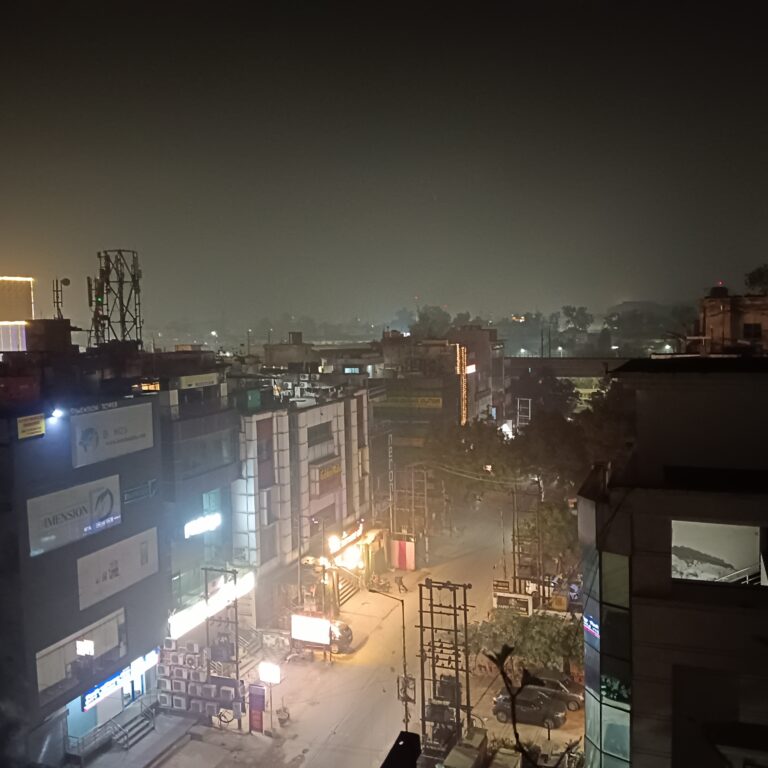
Commentary
Water: National security imperative in a COVID-19 world
 By Indira Khurana, PhD*
By Indira Khurana, PhD*
The COVID-19 pandemic disrupted the world order and change is expected. While addressing the pandemic challenges, countries are also engaged in securing their place in the new world order. Additionally, in India, the focus has again shifted to atmanirbharta and self-sufficiency for gearing up to a post-pandemic world.
COVID-19 reminded us that national security and self-reliance are multi-faceted and more than military might. Security and self-reliance are also about natural resources, sustainable livelihoods, systems and programs that guard and secure the country against poverty, hunger, distress and disease. Its people can then live a life of peace and dignity, where their basic needs are met and there is social and economic protection.
Water is central role in achieving the above. This resource is a key factor in eliminating poverty – or perpetuating it. Water enables agriculture, livelihoods and local food and nutrition security. It enables industry. It promotes a sense of well-being.
Unfortunately, every continent is now affected by water scarcity. According to the World Economic Forum’s 2020 Global Risk Report, there is a high impact risk from “A significant decline in available quantity and quality of fresh water, resulting in harmful effects on human health and/or economic activity.”
Water leads to peace. However, when resources get scarce, opportunities for conflict – or cooperation increase. Threats and security concerns arise. While water’s non-availability can lead to cooperation, it can also lead to conflict, war, unrest, crime and taking up arms.
With respect to water security there are two types of challenges or threats: One between countries and the other, within a country. The former is due to the transboundary nature of water resources while the other has more to do more with internal conservation, distribution and usage.
Transboundary Nature Of Water
Water, as it flows on the surface of the earth or below, does not recognize the political and physical boundaries that the world has divided itself into. Transboundary waters are the groundwater aquifers, lakes and river basins shared by two or more countries. There are an estimated 263 major international river basins in the world. Though the majority of transboundary freshwater river basins cross just two nations, there are 21 river basins that are shared by five or more countries. About 70 per cent of transboundary basins are located between developing and emerging economies, often with extremely variable intra- and inter-
year hydrology, compounded by constraints of water-related institutional capacity and infrastructure resources at national level.
Transboundary waters support the lives and livelihoods of a vast number of people: Depletion of these waters have tremendous potential to cause social unrest and spark conflict within and between countries. Water has the power to shape governance, and be one of the causes of uprisings, such as the Arab Spring. The Arab Spring is the term used for the revolutionary wave of demonstrations and non-violent and violent protests, riots, and civil wars in the Arab world that began in December 2010. The protests began in Tunisia and spread to Egypt, Libya and Yemen. Ruling governments were forced to resign in these countries. In addition, there were uprisings across Bahrain, Syria, Algeria, Iraq, Jordan, Kuwait, Morocco and Sudan. Although lack of human dignity has been widely acknowledged as the main reason for initiating the Arab Spring, there is broad consensus that lack of access to basic services and commodities, particularly food and water for drinking and sanitation purposes fueled an organized and systematic uprising against the present system of governance. In an era of increasing water stress, how these critical resources are managed is vital for promoting peaceful cooperation and sustainable development.
Cooperation between nations through water-sharing agreements has been the most effective instrument in dealing with transboundary water sharing and disputes. According to the Food and Agriculture Organization, more than 3,600 treaties related to international water resources have been drawn up since 805 AD. While most deal with navigation and boundary demarcation, in the last century the focus has shifted towards the use, development, protection and conservation of water resources.
Neutralizing Water Scarcity Threats
South Asian transboundary issues are inextricably linked to regional geopolitics since the main trans-national river systems originate from the Himalayas and involve countries that are unequal in size and power and have been involved in wars in the last six decades. India’s transboundary riparian policies affect four countries – Pakistan, Nepal, Bhutan and Bangladesh on three river systems: The Indus, the Ganga and the Brahmaputra-Meghna. India shares eight transboundary aquifers (groundwater) with neighbouring countries. The transboundary aquifer systems between (i) Punjab, India and Pakistan; and, (ii) West Bengal, India and Bangladesh are under stress due to overexploitation and contamination and need prioritized attention. Collaborative research is needed to better understand the groundwater flows and the linkage between surface and groundwater in these transboundary aquifers so that these can be effectively managed.
Dealing with COVID-19 will necessitate a supranational and integrated water resource management approach for transboundary water resources, based on legal and institutional frameworks and shared benefits and costs. Cooperation – not confrontation and conflict between countries – can ensure proper sharing of water resources in the region. Given the current tensions between India and some of its neighbours, this may prove to be a challenge and hence a multitude of approaches are required. Cooperation on water can also be elicited through people to people interaction and track two diplomacy. These efforts need to be supplemented with in country water conservation through augmenting water resources and minimizing use to minimize risk.
Within India itself, water is contentious and fertile ground for conflict. According to the National Crime Records Bureau report released in early 2020, cases of water disputes in 2018 were almost twice the number in 2017, up from 432 in 2017 to 838 in 2018. These disputes resulted in petty crime, clashes and even murder. Going forward, as we learn to live with COVID-19, water will need to be even more secured in a sustainable manner since (a) Maintaining hygiene needs water; (b) Rural livelihoods need water; (c) Maintaining satisfactory immunity levels includes access to safe water in addition to adequate nutrition and, (d) India is pushing towards atmanirbharta, local production and ‘Make in India, all of which need water.
Creating water sufficiency must become a national imperative after COVID-19. Creating water self-sufficiency implies ‘Making water everybody’s business.’ It implies conserving the rain that falls through locally-appropriate water harvesting systems and structures such as check dams, ponds, talaabs, bunds, recharge pits, rooftop rainwater harvesting systems, recharge wells and others. This conserved water can be used either directly or for recharging surface and groundwater reservoirs and must be used judiciously. In villages, crop patterns suitable to the water available and bringing in efficiency in use should be adopted. The villagers can themselves decide on the crop pattern depending on water availability and monitor that no one is left out from access to water. Dependence on sources outside of the village or piped water supply from distant locations should be minimized. With support from civil society scores of such successful initiatives dot the diverse rural landscape and these efforts needs to spread rapidly and widely.
Urban areas would do well to reduce their water footprint and staking claim over water from rural and far off areas, by augmenting supply through their own efforts of rainwater harvesting, reducing use, recycling water and creating underground groundwater banks that store excess water during monsoon. Industry needs to become more responsible by technological interventions that reduce use and prevent water pollution.
Thus, a multi-pronged people-oriented approach that focuses on water conservation, promotes self-sufficiency in villages and urban areas through water security, judicious water uses across sectors and populations will bring about water sufficiency. While facilitating atmanirbharta and addressing COVID 19 challenges, this water sufficiency will also boost up India’s Water Reserve Banks against international pressures.
* Dr. Indira Khurana is Vice Chairperson Tarun Bharat Sangh and Director, Research at Safai Karmachari Andolan. Views are personal.






Like!! Great article post.Really thank you! Really Cool.